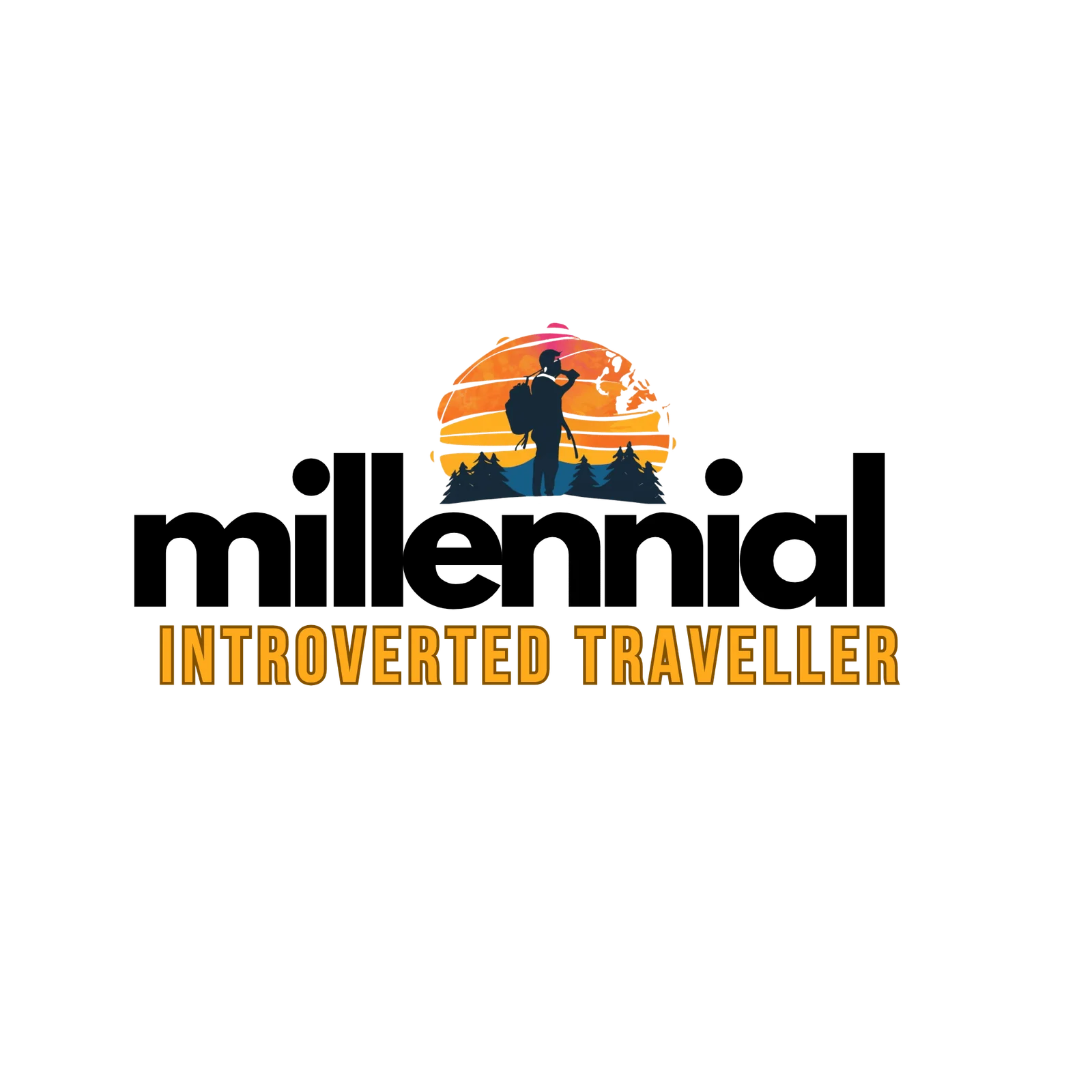Ever thought about turning your love for travel into something that actually pays?
Plenty of people are looking for freedom and flexibility, and sharing your adventures online can open new doors.
If you’ve been wondering how to start a travel blog in 2025 and actually make it work, you’re not alone in that curiosity—but you do need the right approach.
In this post, we’ll walk through simple steps to get going, from choosing your blog name to getting eyes on your content.
If you’re the kind of person who enjoys storytelling, snapping photos, or just want an escape from the 9–5 grind, there’s a space for you online—let’s get into how to make it real.
Is Travel Blogging Worth It in 2025?
Let’s address the elephant in the room: Is starting a travel blog still worth it in 2025?
The honest truth? It’s tougher than ever. Recent AI developments and Google algorithm changes have forced many established travel bloggers to abandon their careers. The glory days of 2018 when anyone could start a blog and quickly gain traction are behind us.
But here’s the good news – it’s absolutely still possible to build a successful travel blog. I’m proof of that, as I write this from my latest destination while my blog generates a full-time income.
The key difference? You need patience, genuine passion, and a strategic approach. If you’re only looking for quick money while traveling, you’ll likely be disappointed.
But if you genuinely love creating travel content, photography, writing, and helping others plan amazing trips – there’s still plenty of opportunity.
As an optimist, I believe the best time to start a travel blog was a decade ago, but the second-best time is today.
7 Steps to Start Your Travel Blog in 2025
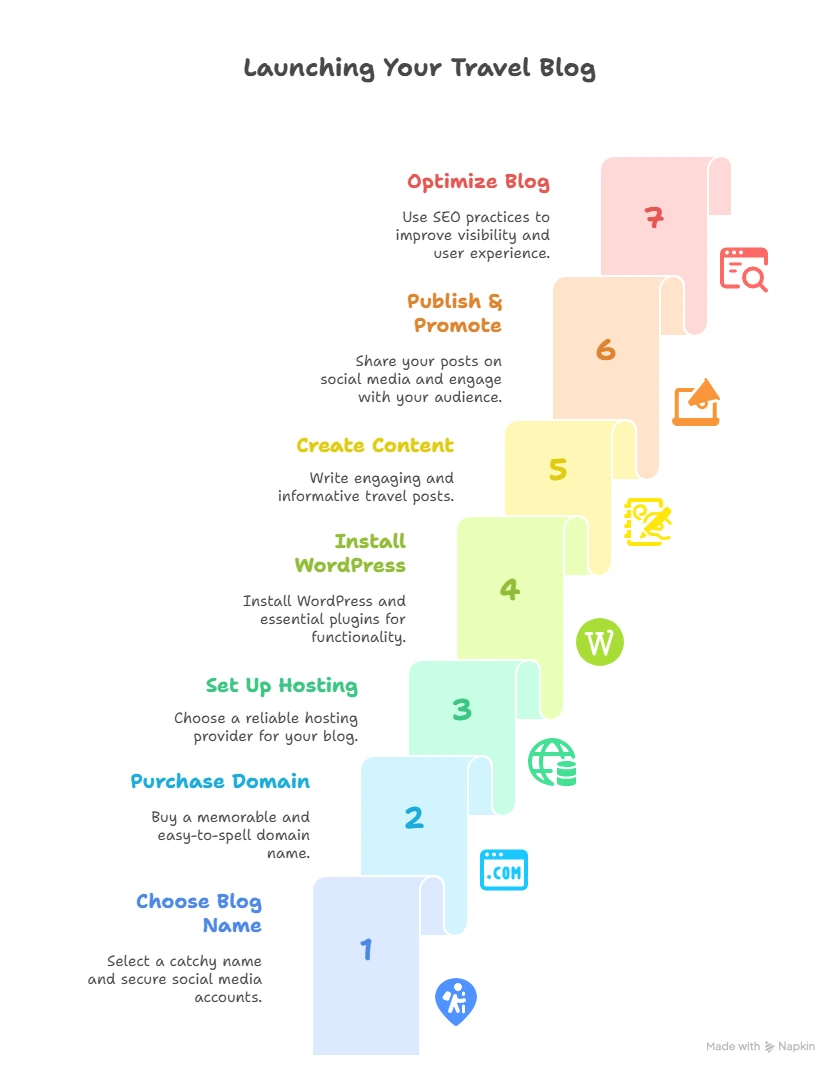
Here’s the roadmap we’ll follow to get your travel blog up and running:
- Choose your travel blog name and secure social media accounts
- Purchase your domain name
- Set up proper hosting
- Install WordPress, themes, and essential plugins
- Start creating quality content
- Publish and promote your first blog posts
- Optimize your blog for readers and search engines
Let’s break down each step in detail.
Step 1: Pick the Perfect Travel Blog Name
Your blog name is your brand identity. While you don’t need “travel” in the name, you should choose something:
- Memorable and easy to spell
- Relevant to your travel style or content focus
- Available as a domain name and on social platforms
- Meaningful to you personally
Don’t overthink this part – many successful travel blogs have simple, straightforward names. What matters most is the content you’ll create.
Once you’ve selected a name, immediately register it on all major social platforms:
- YouTube
- TikTok (if you’re planning video content)
- Twitter/X
Even if you don’t plan to use all platforms immediately, it’s smart to secure your brand name everywhere.
Pro tip: While Instagram and TikTok get a lot of attention, they rarely drive significant traffic to blogs. Pinterest and Facebook typically deliver better results for travel bloggers because they’re designed to send users to external websites.
Remember: Travel bloggers don’t have to be social media influencers. You can succeed with strong written content even without a massive social following.
Step 2: Register Your Domain Name

Your domain name is your website’s address (like www.yourtravelblog.com). I recommend using Namecheap because they offer the most competitive rates (typically $7-15 per year) and have a user-friendly interface.
I initially used Bluehost because they offered a free domain, but later moved to Namecheap for renewals because of their better pricing.
Important note: You’ll see many blog guides recommending Bluehost or Hostinger, but that’s often because these companies offer high affiliate commissions. I’m only recommending tools I actually use, regardless of commission potential.
Step 3: Choose the Right Hosting for Your Travel Blog

Think of hosting as the digital land where your website lives. Quality hosting is crucial for:
- Site speed (critical for SEO)
- Reliability (preventing downtime)
- Security and support
There are four main hosting types for travel bloggers:
a. Shared Hosting
- Best for: New blogs with minimal traffic
- Cost: $2.50-$15/month
- Recommended: Siteground, A2 Hosting
b. Managed WordPress Hosting
- Best for: Serious beginners who want technical help
- Cost: $5-$40/month
- Recommended: BigScoots, Siteground
c. Cloud Hosting
- Best for: Growing blogs needing more power
- Cost: $10-$1,000/month
- Recommended: Cloudways
4. Dedicated Hosting
- Best for: Major blogs with huge traffic
- Cost: $100+/month
- Overkill for most travel blogs
My recommendation? If you’re serious about travel blogging, invest in BigScoots Managed WordPress Hosting.
While slightly pricier than budget options, their support is exceptional, and they handle technical complexities so you can focus on creating content.
For beginners on a tight budget, Siteground’s managed WordPress plan at $4.99/month is a solid alternative.
Connecting Your Domain to Your Hosting
Once you have both domain and hosting, you’ll need to link them:
- Go to your Namecheap account dashboard
- Find your domain and click “Manage”
- Scroll to “Nameservers” and select “Namecheap Basic DNS”
- Enter the nameservers provided by your hosting company
- Save changes
This process typically takes 24-48 hours to complete.
Don’t Forget SSL Security
Make sure your site has an SSL certificate (the little lock icon in browsers). Most quality hosting plans include this automatically, but double-check with your provider. This security feature is essential for visitor trust and SEO.
Step 4: Install WordPress and Set Up Your Travel Blog

When people talk about a “self-hosted WordPress blog,” they mean WordPress.org (not WordPress.com). About 40% of the internet runs on WordPress because it’s:
- User-friendly
- Highly customizable
- Great for SEO
- Cost-effective long-term
Avoid site builders like Wix or Squarespace for serious travel blogging. They limit your control and often perform poorly for SEO.
Choose a Quality WordPress Theme
Your theme determines how your blog looks and functions. I made the costly mistake of choosing a cheap theme initially, then had to completely redesign my site after publishing hundreds of posts.
For serious travel bloggers, I recommend investing in a premium theme:
- Trellis (what I currently use)
- GeneratePress
- Kadence (best free option if budget is tight
- Blocksy (My personal favourite)
These themes are optimized for speed, SEO, and user experience – all critical factors for success.
Installing Your Theme
After purchasing a theme:
- Log into WordPress (yourdomain.com/wp-admin)
- Go to Appearance > Themes
- Click “Add New” and upload your theme’s ZIP file
- Also upload and activate the child theme (for customizations)
- Follow the setup wizard if available
Customizing Your Theme
When designing your blog, follow these principles:
- Keep it simple – Fancy elements slow down your site
- Choose 2-3 brand colors – Consistency builds recognition
- Limit fonts to two – Each font increases load time
- Prioritize mobile design – 75% of visitors use phones
Essential WordPress Plugins
Plugins add functionality to your blog, but too many will slow it down. Start with these essentials:
- RankMath or Yoast SEO – Helps optimize content for search engines
- WP Rocket or your host’s caching plugin – Improves site speed
- ShortPixel – Optimizes images to load faster
Avoid using page builders like Elementor. The native WordPress Gutenberg editor works perfectly well and is much faster.
Step 5: Create Compelling Travel Content
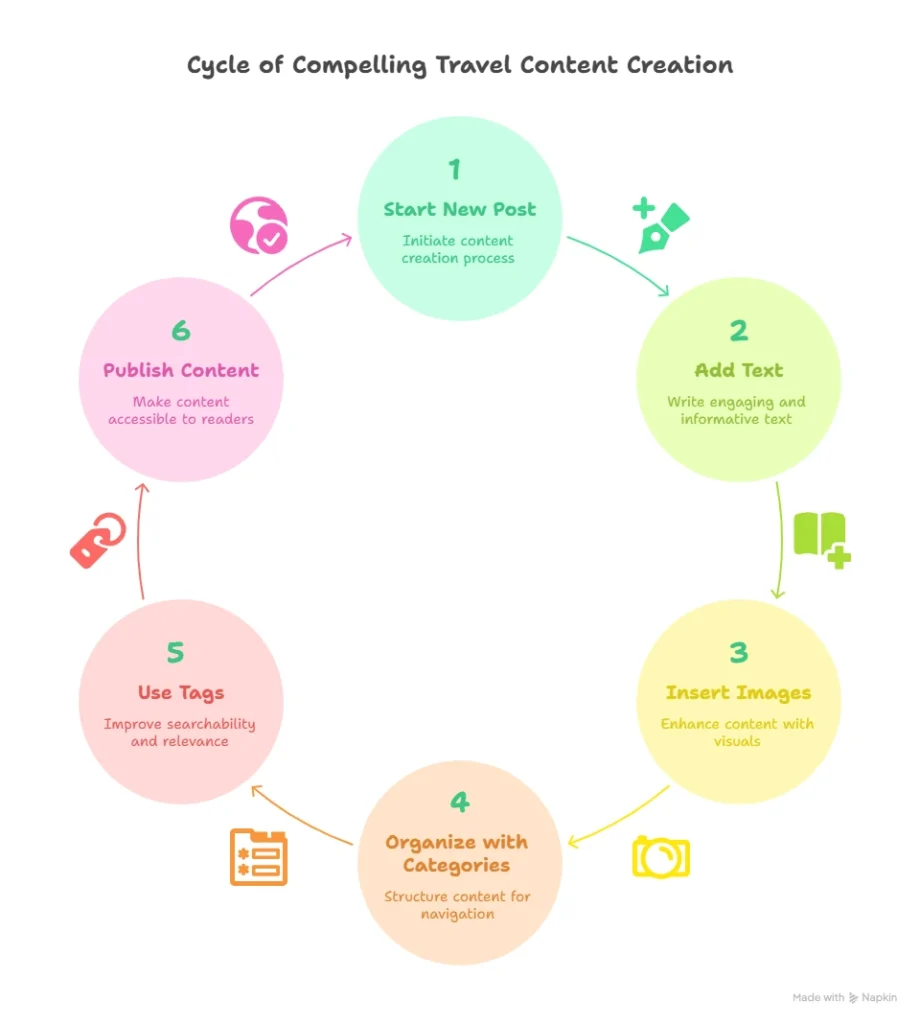
Now for the fun part – writing blog posts that will attract and engage readers!
From your WordPress dashboard, go to Posts > Add New to start creating content. The block editor makes it easy to add text, images, and other elements without coding knowledge.
Organizing Your Content with Categories and Tags
Categories and tags help readers navigate your site. I use a simple structure with:
- Geographic categories (countries/regions)
- Content type categories (hiking, budget travel, etc.)
Keep your structure logical and avoid creating too many tags – Google doesn’t like thin content spread across too many pages.
Step 6: Publish and Share Your Content
Once you’ve written a few quality posts, hit publish and start sharing them across your social platforms. Congratulations – you’re officially a travel blogger!
Set up Google Analytics to track your traffic sources and understand which content resonates with readers.
Step 7: Optimize Your Blog for Humans and Search Engines

For most travel blogs, Google search will be your primary traffic source. The key to ranking well? Creating genuinely helpful content for real humans.
While this sounds simple, effective SEO requires strategy. Here are essential tools for travel bloggers:
- RankIQ – My favorite keyword research tool with hand-picked keywords sorted by difficulty ($49/month)
- RankMath – WordPress plugin to help optimize each post
- Keysearch – More affordable keyword research tool ($13/month)
Speed Optimization Tips
Site speed dramatically impacts both user experience and SEO. A few tips:
- Use a CDN like Cloudflare (free) to deliver content faster worldwide
- Choose server locations close to your primary audience
- Optimize images before uploading
- Minimize plugins to essential ones only
How to Define Your Travel Blog Audience
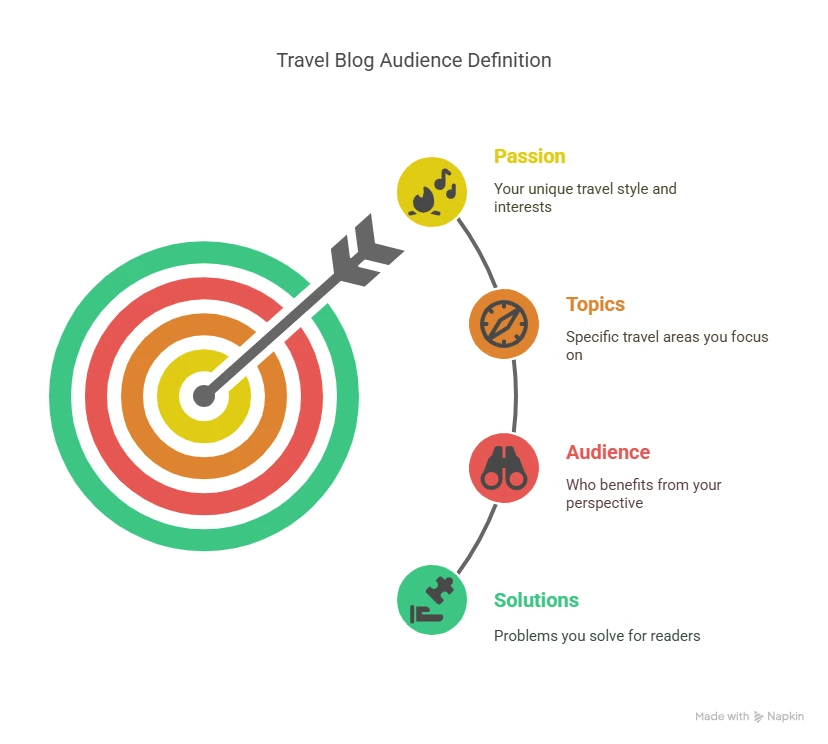
Generic travel blogs struggle in today’s competitive landscape. To stand out, you need a clearly defined audience and content focus.
Ask yourself:
- What’s unique about how I travel?
- What specific travel topics am I passionate about?
- Who would benefit most from my perspective?
- What problems can I solve for my readers?
For example, my blog focuses on adventure travel, hiking, and in-depth destination guides for independent travelers. This clarity helps me create content that serves a specific reader’s needs rather than trying to appeal to everyone.
Do Travel Bloggers Really Make Money?
How Much Do Travel Bloggers Make?
According to ZipRecruiter, as of May 2025, the average hourly pay for a travel blogger in the United States is approximately $29.94, which equates to an annual income ranging between $34,500 to $90,500.
Top earners in the 90th percentile report making up to $185,000 per year. This demonstrates a significant earning potential for those who treat blogging as a serious business.
99firms echoes this outlook, reinforcing the idea that travel blogging can be a profitable career when approached strategically.
What Influences a Travel Blogger’s Income?
Earnings aren’t automatic—most bloggers don’t strike it rich overnight. According to Travelpayouts, the key factors that influence a blogger’s income include:
- Audience size and engagement: A loyal, active following opens the door to brand deals, affiliate commissions, and ad revenue.
- Niche: Specialized blogs (e.g., luxury solo travel or eco-travel) often attract more lucrative partnerships.
- Content quality and SEO: High-ranking, value-driven content increases organic traffic and monetization opportunities.
- Diverse income streams: Successful bloggers often earn from multiple sources—affiliate marketing, sponsored posts, digital products, ads, and even speaking gigs.
- Consistency and effort: It often takes years of dedicated work before income becomes substantial.
In short, yes—travel bloggers make money. But like any business, it’s the result of strategic effort, skill-building, and long-term consistency.
With the right approach, many turn their passion for travel into a sustainable and profitable career.
Travel Blogging Challenges in 2025
Travel blogging has evolved significantly with several new challenges:
- AI content saturation – Standing out requires authentic, first-hand experiences
- Google algorithm changes – More focus on E-E-A-T (Experience, Expertise, Authoritativeness, Trustworthiness)
- Mobile optimization – Sites must perform flawlessly on smartphones
- Video content expectations – Incorporating video is increasingly important
Despite these challenges, travel blogging remains one of the most rewarding ways to share your adventures while building a location-independent income.
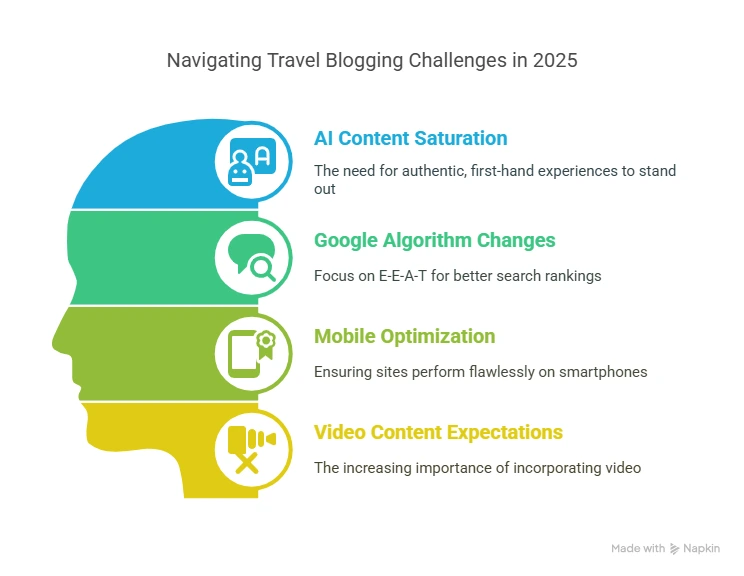
Essential Tools for Serious Travel Bloggers
If you’re committed to building a successful travel blog, here’s what I recommend investing in:
- Domain: Namecheap ($7/year)
- Hosting: BigScoots ($34/month)
- Theme: Trellis ($149/year) or Kadence (free)
- SEO Tool: RankIQ ($49/month)
This setup requires an initial investment of about $250, but provides a professional foundation for growth.
Final Thoughts: Is Travel Blogging Right for You?
Travel blogging isn’t for everyone.
It requires patience, persistence, and genuine passion for travel content creation. If you’re looking for quick money, there are easier paths.
But if you love traveling, writing, photography, and helping others experience the world, few careers offer the same freedom and fulfillment.
The question isn’t whether travel blogging is still viable – it absolutely is.
The question is whether you have the passion and persistence to see it through the initial growth phase.
Ready to start your travel blogging journey?
Follow the steps in this guide, focus on creating exceptional content, and remember that the most successful travel blogs are built on authenticity and genuine expertise.
Have you started a travel blog or are you thinking about it?
What questions do you have about the process? Let me know in the comments below!
